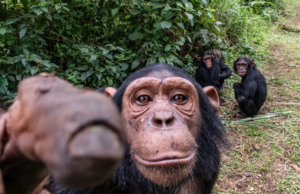How our beds are dirtier than chimpanzee nests

Even when they searched for arthropods such as fleas, lice and ticks in 15 of the nests, the scientists came up almost empty-handed. “There were only four ectoparasites found, across all the nests,” Thoemmes said. “And that’s four individual specimens, not four different species.”
It has been estimated that up to a third of the weight of a person’s used pillow could be comprised of dead skin, dust mites and their feces. A standard household’s duvet could contain some 20,000 mites, while a typical used mattress may hold anything up to 10m of them. Although the chimp nests were found to contain a more diverse selection of microbes, those microbes appeared to come from the nests’ surroundings, not from the chimps themselves.
The NCSU study concludes that humans “have created sleeping places in which our exposure to soil and other environmental microbes has all but disappeared, and we are instead surrounded by less diverse microbes that are primarily sourced from our own bodies”.
And that may have increased our vulnerability to allergies and other health conditions. “In some ways,” said Thoemmes, “our attempts to create a clean environment for ourselves may actually make our surroundings less ideal.”
Source: The Guardian

 Español
Español
 Português
Português








